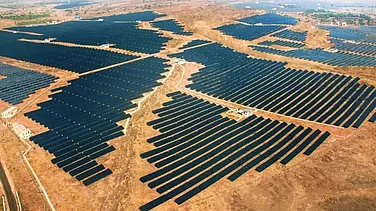India's monsoon has revived after stalling for more than a fortnight and rains are expected to cover central parts of the country this week, bringing relief from the heatwave in the grain-growing northern plains, two senior weather officials told Reuters on June 16.
The monsoon delivers nearly 70% of the rain that India needs to water farms and recharge aquifers and reservoirs. It is reportedly responsible for the country's nearly $4 trillion economy.
About half of India's farmland depends on the annual June-September rains for crop growth in the absence of irrigation.
The monsoon has restored after a fortnight as a favourable weather system has developed in the Bay of Bengal, which would help the monsoon to cover entire central India this week, an official of the India Meteorological Department (IMD) told Reuters.
Monsoon rains on June 16 covered almost entire western state of Maharashtra and entered into neighbouring Gujarat and central state of Madhya Pradesh, the official stated.
The monsoon has gained the required momentum and heavy rainfall is likely over west coast, central and some parts of north India in next ten days, which will significantly bring down temperatures, another weather official added.
India has received 31% lower rainfall than average in the first half of June, but in the second half the country is expected to receive above average rainfall, the official said.
The official also asserted that monsoon rains are set to progress quickly in the next few days and could cover most parts of the country before the end of June.
Timely Rain Ideal for Sowing
Due to an unusually early and above‑average monsoon, IMD forecast on May 27 that India will experience “above-normal” rainfall in June 2025. The weather agency estimated the rains to be reaching 108% of the long-period average over North Western India.
“India is likely to see above-normal rainfall in the four-month monsoon season (June to September), with cumulative rainfall estimated at 105 per cent (with a model error of 5 per cent) of the long-period average of 87 cm," M Ravichandran, secretary in the Earth Sciences Ministry, told a press conference in New Delhi, as reported by PTI.
Widespread rains are ideal for sowing of rice, pulses and oilseeds and other Kharif crops. With optimal planning, farmers can potentially boosting yields, easing inflationary food pressures and supporting rural incomes as sowing deadlines approach.




























